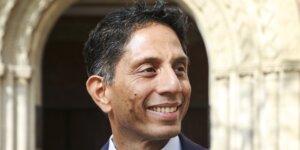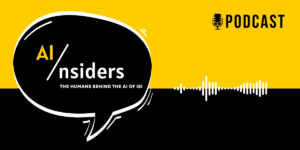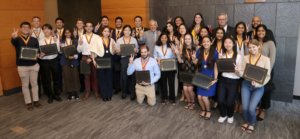
Photo Credit: Imaqs/Getty Images
“ISI values diverse thinking. To have diverse thinking you must have diversity within your researchers, students and staff,” said Jamani King, DEI program specialist at the Information Sciences Institute (ISI), a research institute of the USC Viterbi School of Engineering.
Over the past several years, the leadership at ISI has taken steps to show their commitment to diversity, equity and inclusion (DEI), including the formation of the DEI Steering Committee; bringing a DEI consulting firm onboard; creating King’s position, wholly dedicated to DEI; and more.
“Addressing diversity, equity and inclusion throughout ISI is of utmost importance to who we are and our future,” said Terry Benzel, Networking and Cybersecurity Division Director, who serves as Associate Director of the DEI Steering Committee. She continued, “As a woman, I am particularly sensitive to challenges in technical fields such as computing and engineering.”
Joining Benzel as Associate Director of the steering committee is Stephen Crago, Director of the Computational Systems and Technology Division, who added, “DEI is important so that ISI can attract and attain the most talented people, and so that our environment is one in which all can make their best contributions.”
Alongside Benzel and Crago, the DEI Steering Committee has significant experience and knowledge with members including ISI HR professionals; Brandi Jones, USC Race & Equity Center Chief Operating Officer; and Ken Bonner, Associate Dean for Inclusion and Diversity Initiatives at Viterbi School of Engineering. They work alongside ISI senior leadership to ensure DEI is top-of-mind at ISI.
“DEI is a priority at ISI in order to grow the pool of talent from which we recruit for all of the positions across the institute and to help create an environment that is welcoming to everyone regardless of background, gender or race,” said Craig Knoblock, the Keston Executive Director of ISI.
Better Research Comes from Diverse Teams
ISI was founded over 50 years ago “to solve the world’s most difficult technical problems,” and that remains its central goal. It takes a top-notch team to solve difficult problems, and decades of research show that diverse teams outperform homogeneous teams.
“In the research area, it’s important to have diversity because you have different thoughts, different ways of approaching problems, a better mix of ideas,” said Derek Mikuriya, ISI Director of Human Resources and Head of DEI Initiatives. “In the end, diversity truly makes ISI a better research institution.”
And when it comes to ISI as a learning institution, Bonner said, “Our students will graduate and go out into a world that is increasingly diverse. So, providing an engineering education where they see individuals like themselves teaching as professors, preparing them to work on diverse teams, preparing them to innovate together, is one of the greatest goals I have.”
Much of this work happens in the hiring process. “You can bring a lot of diverse individuals into an organization, but if you don’t have an inclusive environment, where people are comfortable coming to work every day and being their authentic selves, you’re going to lose them,” noted Mikuriya.
Inclusion and Equity Are What Keep People Here
For King, creating an inclusive environment is about making people feel like they belong in the workplace. Her goal is to create an environment at ISI where people want to come and work and provide policies and structure to back that up. She said, “Inclusion is about feeling comfortable being yourself and having psychological safety in the workplace.” And equity is about fairness – ensuring fair treatment, access, policies and opportunities for advancement for each person in an organization.
These come together in one of the goals of the ISI DEI team: “for everyone interacting with our organization to feel that they belong and have a genuine opportunity for success.”
The ISI team gathered data to establish a baseline of their performance regarding this goal. To do this, with the help of the consultants, a Climate Assessment was conducted. This included an all-employee survey, focus groups, and interviews with leadership. With the information collected, the DEI team constructed a strategic plan that began with training sessions.
Over the course of the last year, there has been institute-wide training on basic DEI, as well as many targeted training and discussion sessions. Research leadership and senior leadership have had formal training and individual coaching on being an inclusive leader. Benzel said, “To me, most importantly, we’ve opened up the floor for conversation. As an institute, we are engaging and thinking about DEI in everything we do.”
“It’s a journey,” said Mikuriya. “The first year was about educating people on the basics and what the terms mean. Then we started talking about how we become a more inclusive environment. Going forward, our goal is to talk about tools that people can use as a leader or as an employee to help build that inclusive environment.”
ISI DEI IRL
While the training continues, deploying the lessons learned in the training and making inclusion part of the real day-to-day experience of working or learning at ISI is the challenge the DEI team face on a daily basis. What does that look like?
Employee Resource Groups
They’ve initiated Employee Resource Groups (ERGs), which are groups of employees that promote inclusivity, authenticity, and belonging. King said, “A lot of people think ERGs are just for the underrepresented, but they’re for anyone who is looking for someone to relate to in the workplace. They pull people together and give them a safe space, help facilitate change, offer a place to connect, and provide personal and professional growth opportunities.”
Mentoring Program
The ISI Mentoring Program was launched in 2022 to improve the ability of all people to succeed at ISI. For early career scientists, this includes quickly getting their research published and acquiring funding while avoiding burnout, integrating into ISI’s organizational culture, making connections with others at ISI, and facilitating collaboration. The program connects early career scientists with senior principal investigators with the goal of growing the ISI research community and providing a pathway for success for all early career scientists.
Research Engineer Internship Program
This program provides a pipeline of talent for master’s students and undergrads with an interest in becoming Research Engineers. It allows these students to participate as active team members in ongoing research projects, work directly with faculty and research staff, contribute to a software or hardware system, and engage with emerging technologies.
Stimulating STEM
When it comes to diversifying the student base, Bonner, in his role at Viterbi, is focused on generations down the road. “The specific challenges within an engineering school really start with the K through 12 pathways. Minoritized groups, specifically African American, Hispanic and Native Americans are often not exposed to engineering concepts at the K through 12 level. So, the challenge is to bring engineering into the classroom at an early age for these students.
ISI has an answer to this challenge: Stimulating STEM Summer Program. This is a free program designed to stimulate an interest in STEM among students from marginalized communities who have been historically underrepresented in the industry. It involves robotics, coding, artificial intelligence, cybersecurity, quantum computing, space engineering and more through a hybrid curriculum that includes instruction, workshops, seminars and tours.
Cultural Celebrations
ISI, Viterbi, and USC recognize and celebrate diverse identities and underrepresented groups. Bonner said, “This helps to create an environment where individuals feel like they can be their authentic selves, that their individuality will be respected when they’re here, and they can bring that individuality with them.”
Published on September 12th, 2023
Last updated on June 23rd, 2025













